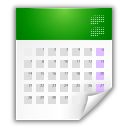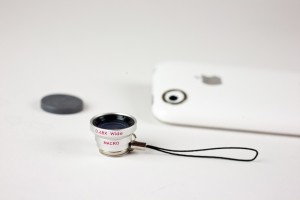 Here’s my tiny explanation of Microformats, how to use them, and how they can help futureproof your website.
Here’s my tiny explanation of Microformats, how to use them, and how they can help futureproof your website.
To understand how Microformats work I’ll use an illustration; a website is like a recipe containing instructions on how your web browser should build and display the website. This is written in a language called HTML. Microformats are a subset of HTML that tell the web browser what type of information is on the page instead of just displaying the information.
Think of it like a recipe inside of a recipe, like a pizza recipe that contains a complete recipe for pizza crust inside of it. If it’s marked clearly enough, you could easily pull that pizza crust recipe out from the pizza recipe and use just that if you wanted.
What microformats are most popular?
 The most popular Microformats are Address cards, Calendars, Product Reviews, Resumes, and Tags, and they’re all relatively easy for a professional to add to your site.
The most popular Microformats are Address cards, Calendars, Product Reviews, Resumes, and Tags, and they’re all relatively easy for a professional to add to your site.
Why should you use them?
Microformats have existed for a few years now and so many large websites (Google, LinkedIN, Twitter, Youtube, Wikipedia) are already slowly adding support for them.
When we revisited our recipe pages on FoodNetwork.com a few months ago, it was one of our priorities in Front End Engineering to embed hRecipe. We knew that it would be only a matter of time for tool support to come along to utilize our recipe data. As Front End Engineers, we have real control over what are pages output, and we have a real opportunity maximize the amount of data that a tool like Google can glean from our markup. It would be a poor practice to not take advantage of microformats when something as powerful as Google recognizes their importance.
Says Mark Wunsch, a developer for Foodnetwork.com, read the rest of that article
At the same time people are slowly extending web browsers or adding support for Microformats to web services. If you’re a business then your location will be far easier for web-based services to find you if you contain your business information in an Address card (hCard). Some web browsers and web browser plugins can already detect any Microformats on a website and allow you to pull them out of the site and save the information on your computer or add it to your Address Book.
Sooner or later everybody will be using Microformats and you too will have them on your site – but if you’re the first of your competitors to embrace this technology then for a while you’re far easier for people to find – isn’t that reason enough?
Who can make Microformats?
 You can, if you have an understanding of basic HTML. Otherwise any web designer worth his salt can make one for you; it’s not difficult and doesn’t take too long to do it properly, but the advantages (especially right now if you’re an early adopter) are well worth the investement. It’s always easiest to hand-craft your microformats, but go ahead and check out the free tools available at microformats.org/code-tools
You can, if you have an understanding of basic HTML. Otherwise any web designer worth his salt can make one for you; it’s not difficult and doesn’t take too long to do it properly, but the advantages (especially right now if you’re an early adopter) are well worth the investement. It’s always easiest to hand-craft your microformats, but go ahead and check out the free tools available at microformats.org/code-tools
Where can I find out more about Microformats?
The home for all discussion of Microformats happens over at microformats.org
—Tom








